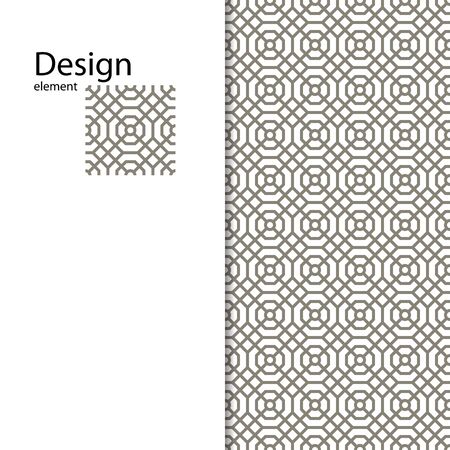Introduction to Thermal Comfort in UK Buildings
Thermal comfort is a critical aspect of building design and maintenance across the United Kingdom, influencing both the wellbeing of occupants and the overall energy efficiency of properties. Defined as the condition of mind that expresses satisfaction with the surrounding thermal environment, thermal comfort takes on particular importance within the UK’s varied climate, where temperatures fluctuate between chilly winters and unpredictable summers. In both residential homes and commercial spaces, achieving a consistent and comfortable indoor temperature is not simply a matter of convenience—it’s a key factor in promoting productivity, health, and energy savings. As such, maintaining proper insulation and utilising sustainable solutions like eco-friendly textiles and wall coverings has become increasingly significant. These measures not only support occupant comfort but also align with broader environmental goals by reducing carbon footprints. In this context, understanding how to effectively manage thermal comfort in buildings is a top priority for homeowners, facility managers, and property professionals throughout the UK.
2. Principles of Insulation and Heat Retention
Understanding the principles of insulation and heat retention is essential for achieving thermal comfort within British homes, especially considering the UKs varied climate. Heat transfer occurs through three primary mechanisms: conduction, convection, and radiation. Effective insulation strategies are designed to minimise unwanted heat loss in winter and reduce excessive heat gain in summer, thereby maintaining comfortable indoor conditions while enhancing energy efficiency.
Fundamental Concepts of Heat Transfer
Heat naturally moves from warmer areas to cooler ones. In a home environment, this process can lead to substantial energy loss if not properly managed. The table below summarises the main types of heat transfer relevant to building interiors:
| Type of Heat Transfer | Description | Common Examples in Homes |
|---|---|---|
| Conduction | Heat moves through solid materials. | Walls, floors, windows |
| Convection | Heat circulates via air or liquid movement. | Draughts, radiators, air gaps |
| Radiation | Heat travels as infrared waves from warm to cool surfaces. | Sunlight through windows, warmth emitted by radiators |
Insulation Strategies for UK Homes
The selection and implementation of insulation materials play a significant role in mitigating heat transfer. Sustainable textiles and wall coverings offer eco-friendly alternatives that improve thermal resistance without compromising on style or environmental impact. Common insulation strategies include:
- Loft and Roof Insulation: Prevents heat from escaping upwards.
- Cavity Wall Insulation: Fills gaps between external walls to reduce conduction losses.
- Draught Proofing: Seals gaps around doors and windows to curtail convective losses.
- Sustainable Wall Coverings: Utilise natural fibres or recycled materials that provide additional thermal mass and resistance.
The Relevance to Energy Efficiency and Comfort
By employing these insulation methods, homeowners can maintain a consistent indoor temperature throughout the year, reducing reliance on heating systems and lowering energy bills. Sustainable textiles contribute an extra layer of protection while aligning with the UKs growing commitment to eco-conscious living. Ultimately, understanding and applying these principles ensures both enhanced comfort and long-term cost savings for British households.

3. Sustainable Textiles: Materials and Applications
Eco-friendly textiles have become an essential element in enhancing thermal comfort and insulation within British interiors. Increasingly, homeowners and businesses are seeking sustainable alternatives to traditional materials, not only for their environmental benefits but also for their superior performance in regulating indoor temperatures. Among the most popular options are organic cotton, hemp, bamboo, linen, and wool—each offering distinct advantages when it comes to maintaining warmth and breathability in UK properties.
Thermal Properties of Sustainable Textiles
Sustainable textiles excel at moderating heat transfer due to their natural fibre composition. Wool, for instance, is renowned for its outstanding insulating properties—it traps air between fibres, effectively slowing down heat loss during colder months while remaining breathable enough to prevent overheating in summer. Similarly, hemp and linen boast impressive moisture-wicking abilities that help maintain a comfortable indoor humidity level, crucial for both health and building longevity.
Sources and Sourcing Practices
The provenance of sustainable textiles matters greatly within the UK context. Many suppliers now prioritise locally grown fibres or those certified by reputable eco-labels such as the Global Organic Textile Standard (GOTS) or Fairtrade. This approach not only reduces transportation emissions but also supports British agriculture and manufacturing sectors. For example, British wool is making a comeback as a favoured choice for wall coverings and soft furnishings due to its low carbon footprint and excellent insulating characteristics.
Practical Benefits for British Homes and Workplaces
Adopting sustainable textiles in interiors delivers tangible benefits beyond energy efficiency. Their hypoallergenic nature makes them ideal for allergy sufferers, while their durability ensures they withstand the rigours of daily use in busy environments like family homes or offices. Furthermore, many eco-friendly fabrics offer versatility—they can be used as curtains, wall hangings, upholstery, or even acoustic panels, all contributing to improved comfort and reduced heating costs throughout the year. As demand grows for greener solutions in the UK built environment, these materials provide a practical pathway towards healthier, more energy-efficient spaces.
4. Wall Coverings: Innovation and Functionality
In the pursuit of improved thermal comfort and insulation, modern wall coverings have evolved far beyond their traditional decorative function. Today’s solutions incorporate advanced materials and technologies that not only enhance visual appeal but also play a critical role in maintaining comfortable indoor environments while promoting energy efficiency.
Performance-Based Materials for Enhanced Comfort
Contemporary wall coverings often feature performance-based materials specifically designed to address insulation needs. These innovations help regulate internal temperatures by minimising heat loss during colder months and reducing heat gain in summer. The application of such materials is particularly relevant in the UK, where fluctuating weather conditions demand versatile solutions for both new builds and retrofit projects.
Examples of Innovative Wall Coverings
| Material Type | Insulation Properties | Additional Benefits |
|---|---|---|
| Cork Wall Panels | Natural insulator; reduces thermal bridging | Sound absorption, renewable resource |
| Textile Wall Coverings with Recycled Fibres | Adds extra thermal layer; improves warmth retention | Sustainable, breathable, customisable designs |
| Ceramic-Coated Wallpapers | Reflects radiant heat; maintains stable room temperature | Mould-resistant, easy to maintain |
| Phase Change Material (PCM) Panels | Absorbs and releases heat as needed; evens out temperature swings | Reduces energy demand, long lifespan |
| Laminated Insulation Boards with Decorative Finishes | High thermal resistance; effective on exterior-facing walls | Aesthetically versatile, increases property value |
The Impact on Occupant Wellbeing and Energy Use
Beyond just keeping interiors warm or cool, these innovative wall coverings contribute significantly to occupant wellbeing by creating draught-free, consistent indoor climates. This is especially important in British homes and offices, where older buildings may struggle with poor insulation. By choosing functional wall finishes that support both insulation and air quality, property owners can reduce reliance on central heating and cooling systems—lowering energy consumption and running costs in line with sustainability targets.
5. Case Studies: Sustainable Upgrades in British Properties
Introduction to Real-World Applications
Across the UK, a growing number of property owners and facility managers are recognising the benefits of integrating sustainable textiles and innovative wall coverings to improve thermal comfort and energy efficiency. The following case studies highlight how these solutions have been practically applied, focusing on measurable outcomes such as reduced heat loss, improved occupant comfort, and lower energy bills.
Historic Townhouse Retrofit in Bath
An 18th-century townhouse in Bath underwent a sympathetic retrofit where natural wool-based insulation panels were installed behind period-appropriate textile wall hangings. These materials not only preserved the building’s heritage aesthetic but also significantly enhanced its thermal envelope. After installation, internal temperature monitoring revealed a 25% reduction in heat loss through exterior walls during winter, while residents reported noticeably improved comfort levels throughout the year.
London Social Housing Upgrade
A social housing estate in South London upgraded several flats with recycled cotton-blend wall coverings combined with breathable hemp fibre underlayments. This approach provided an eco-friendly alternative to synthetic insulation and contributed to healthier indoor air quality. Post-upgrade assessments indicated that heating demand was reduced by an average of 18% per flat, resulting in tangible savings for tenants and a smaller carbon footprint for the housing association.
Cotswold Cottage Sustainable Renovation
A stone cottage in the Cotswolds incorporated flax-based wallpaper with integrated insulating layers during its renovation. The innovative use of plant-derived textiles enabled the property to maintain a stable indoor temperature despite fluctuating external weather conditions. Data loggers tracked a consistent 2°C improvement in average indoor temperatures during colder months, reducing reliance on central heating and supporting the homeowner’s sustainability goals.
Conclusion: Measurable Impact Across Diverse Properties
These British examples demonstrate that sustainable textiles and modern wall coverings can deliver concrete improvements in both thermal comfort and building performance. Whether preserving historical character or upgrading modern social housing, these solutions are proving their worth as practical, cost-effective tools for achieving better insulation and advancing towards national energy efficiency targets.
6. Maintenance and Longevity Considerations
Understanding the British Context
British homes face unique environmental challenges—think damp winters, fluctuating humidity, and persistent draughts. To ensure that sustainable textiles and wall coverings continue to provide reliable thermal comfort and insulation, a robust maintenance routine is essential. Proper care not only preserves their performance but also extends their lifecycle, supporting both environmental and financial sustainability.
Practical Cleaning Tips for Textiles
Routine Dusting and Vacuuming
For curtains, upholstered panels, or fabric wall hangings, regular dusting or gentle vacuuming with a soft brush attachment helps prevent build-up of dust and allergens that could compromise insulation properties. Always follow manufacturer instructions regarding cleaning frequency and preferred methods.
Spot Cleaning and Stain Removal
Treat spills on natural fibres like wool or cotton promptly using pH-neutral cleaners. Blot, don’t rub, to maintain the integrity of the weave. Where possible, opt for eco-friendly cleaning products to preserve both fabric and the environment.
Caring for Wall Coverings
Humidity Control
Damp can undermine even the best-performing sustainable wall coverings. Use dehumidifiers in areas prone to condensation, such as kitchens and bathrooms, and ensure good ventilation throughout your home. For lime-based plasters or breathable wallpapers made from recycled paper, maintaining stable humidity levels is key to preventing mould growth and material degradation.
Surface Protection
If your wall covering is in a high-traffic area or at risk of scuffing (such as near skirting boards), consider applying a protective natural wax or plant-based sealant. This adds a subtle barrier without compromising breathability—a crucial factor in older British properties with solid walls.
Monitoring Wear and Addressing Issues Early
Regular inspections help catch early signs of wear such as thinning fabric, peeling edges, or discolouration due to sunlight exposure. Promptly repairing minor damage—such as patching small tears in textiles or re-adhering loose wallpaper seams—can significantly extend the overall lifespan of your insulation solution.
Lifespan Management: When to Replace?
Even with careful maintenance, all materials have a finite lifespan. Sustainable textiles typically last five to fifteen years depending on use and exposure; wall coverings may need refreshing every decade. Choose replacements that are locally sourced or easily recyclable wherever possible, maintaining the green credentials of your thermal comfort strategy.
Conclusion: A Commitment to Long-Term Performance
By adopting practical maintenance habits tailored to the British climate—and by selecting durable, high-quality sustainable materials—you ensure that your homes insulation remains effective year-round. This proactive approach not only maximises comfort but also supports wider sustainability goals by reducing waste and prolonging product lifecycles.


